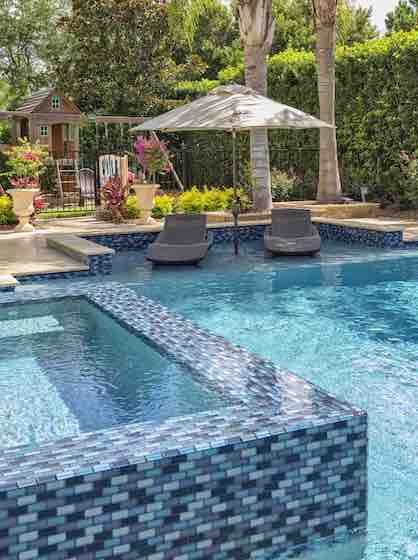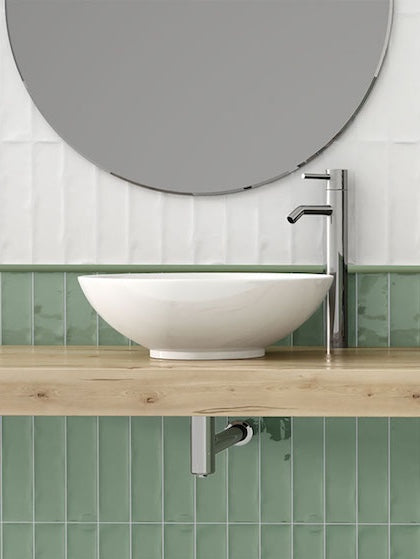What is the best part about summers? Apart from ice cream delights, surfing, and the endless light, something is definitely missing – lounging by the swimming pool, isn't it? Well, who doesn't wait for calming and relaxing moments by the water, right? Besides aesthetics, swimming pools can play a strong character in outdoor and indoor landscaping while playing a solid focal point.
The enlisted swimming pool designs are available in various sizes, shapes, materials, and styles to help your summers go smoother. Hence, it is now time to take a vacation and note down some essential guidelines and ideas to inspire your next swimming pool design. So, are you ready? Let's get started!
Determine the Shape and Style
First and foremost, it is crucial to understand the scale and perspective of the landscape to determine the actual complementary shape. Some of the most common swimming pool shapes are rectangular, oval, or round, kidney-shaped, octagonal, L-shaped, Classic Roman-shaped, freeform, and an 8-figured shape. Can these shapes be determined depending on the functionality and design style? For example, if you like a modern and contemporary design style, choosing a rectangular or L-shaped would be recommended. On the other hand, for a bohemian or a vintage style, why not try 8-figured or freeform?
Rectangle Pools L-Shape Pools
L-Shape Pools Kidney Shaped Pool
Kidney Shaped Pool Free Form Pools
Free Form Pools

Dark Color Swimming Pools Swimming Pools with Glass Tiles
Swimming Pools with Glass Tiles 

Roman Style Pools
Swimming Pool Surfacing Materials
Choosing materials wisely would add aesthetical value and save you money in the long run. From a wide array of material finishes options available, I will list a few preferences you could consider.
One of the most common surfacing materials is Diamond Brite. This exposed aggregate finish includes blending selected quartz aggregates with the white Portland cement and is considered highly durable. It adds a touch of luxe and glamour to the swimming pools.
Another surfacing material option is pool tile. It is durable and available in various styles and colors. Due to their glossy finish, the water reflects and exhibits a perfect shiny appearance. Although tiles are often applied to just the pool's waterline, steps, or floor – well, they can also be used to finish the entire pool interiors. However, being one of the most expensive, they take a comparatively more extended time to install – but they definitely last much longer. Some of the tiles you can incorporate into a swimming pool are porcelain tiles and glass mosaic tiles. You can always use tiles as a decorative element in your pool, even when choosing Diamond Brite or Pebble Tec as the primary surface material.
In the last decade, glass tiles have become a trendy choice for swimming pools because prices have come down, and installers are more familiar than ever with the material.
There are some myths about glass tiles not being a good choice for swimming pools you should be aware of. One is that glass tiles are not frost-proof and won't withstand freezing temperatures. That is simply not true. Glass tiles have zero water absorption and are a frost-proof material. However, many glass tiles are not suitable for swimming pools due to other factors. The key is to ask the manufacturer about the product's suitability for pool installation.
Another myth is that glass tiles will crack over time. That can happen to glass and any other tile, including porcelain pool tiles.
When installing tiles in swimming pools, movement/expansion joints must be installed per "2017 TCNA Handbook For Ceramic, Glass and Stone Tile Installation." That will prevent the tiles from cracking if an expansion or contraction occurs, which is normal. Learn more about installing glass mosaic tiles in a swimming pool.
Last but not least, Pebble Tec is an earthy textured finish that adds a sense of elegance and sophistication to the swimming pools. It makes an ideal option for all those who desire a more natural environment for their swimming pools. Moreover, they are available in various colors that you could choose from.
Swimming Pool Colors
Several blues and grays offer a dynamic appearance on the swimming pool surfaces. There are comprehensive options to choose from, from sapphire blues to crystal blue, aquamarine, diamond sand, silver-gray, graphite gray, and ebony gray. However, you must be considerate around the local panoramas – for example, the swimming pool's depth, the nearby house exteriors, and the surrounding trees. Lighter colors will help make your swimming pool look larger. In contrast, darker colors will enclose the retaining walls – making them look smaller.
Another point to consider when choosing the color of your pool is heat absorption. Dark-colored interior pools hold heat longer than light-colored ones. So choose wisely depending on your area's summer and winter patterns.
Best Location for the Swimming Pool
It is generally ideal to face your swimming pool in the south or the west directions since it gets ample sunlight throughout the day to keep up the right temperature at all times. Furthermore, it is crucial to consider your pool's shape, size, and overall distance from the building entrance. Usually, backyards and front yards are the best spaces to place a swimming pool.
So, now that we have discussed various factors of the swimming pool design, are you excited about incorporating any?
















